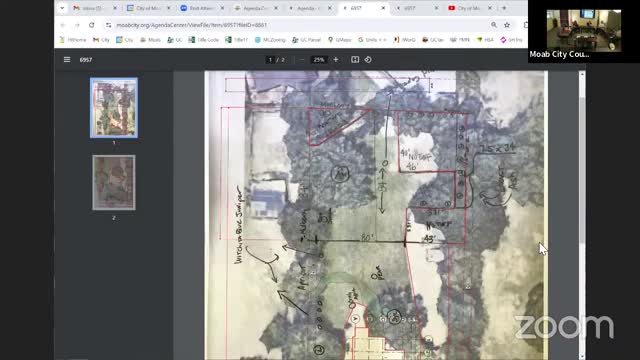Zoning Commission debates fate of historic ash trees
July 25, 2024 | Planning Commission, Moab, Grand County, Utah

This article was created by AI summarizing key points discussed. AI makes mistakes, so for full details and context, please refer to the video of the full meeting. Please report any errors so we can fix them. Report an error »

During a recent government meeting, officials discussed the fate of several mature ash trees located on a property that do not appear on the approved plant list. The zoning administrator expressed concerns regarding the trees' susceptibility to diseases, particularly from pests like the emerald ash borer. Despite these risks, the staff recommended that the trees remain in place, citing their significant contributions to the local environment, including shade, soil stabilization, and urban heat island mitigation.
The analysis presented by staff highlighted that while diversity in urban forestry is essential for resilience against pests, the mature ash trees in question provide irreplaceable benefits that newly planted trees cannot match. The trees have been part of the landscape for decades, with one reportedly over 100 years old, and their removal would detract from the community's quality of life and property values.
The applicants, Mark Antinuccio and his partner Amanda, passionately defended the trees, emphasizing their historical significance and the care they have taken to maintain them. They noted that the trees are regularly trimmed and treated to mitigate disease risks, reinforcing their commitment to preserving these natural assets.
Commission members echoed the sentiment that the intent of the landscape code is to protect established, healthy trees that are not classified as noxious weeds. There was a consensus that removing such trees could set a concerning precedent, especially when alternatives exist for managing pest threats.
The discussion concluded with assurances that if any of the trees were to succumb to disease, the property owners would be required to comply with landscape ordinances and replace them with appropriate new plantings. This approach aims to balance the preservation of mature trees with the need for a diverse and resilient urban forest.
The analysis presented by staff highlighted that while diversity in urban forestry is essential for resilience against pests, the mature ash trees in question provide irreplaceable benefits that newly planted trees cannot match. The trees have been part of the landscape for decades, with one reportedly over 100 years old, and their removal would detract from the community's quality of life and property values.
The applicants, Mark Antinuccio and his partner Amanda, passionately defended the trees, emphasizing their historical significance and the care they have taken to maintain them. They noted that the trees are regularly trimmed and treated to mitigate disease risks, reinforcing their commitment to preserving these natural assets.
Commission members echoed the sentiment that the intent of the landscape code is to protect established, healthy trees that are not classified as noxious weeds. There was a consensus that removing such trees could set a concerning precedent, especially when alternatives exist for managing pest threats.
The discussion concluded with assurances that if any of the trees were to succumb to disease, the property owners would be required to comply with landscape ordinances and replace them with appropriate new plantings. This approach aims to balance the preservation of mature trees with the need for a diverse and resilient urban forest.
View full meeting
This article is based on a recent meeting—watch the full video and explore the complete transcript for deeper insights into the discussion.
View full meeting

